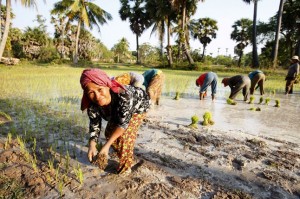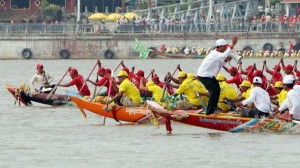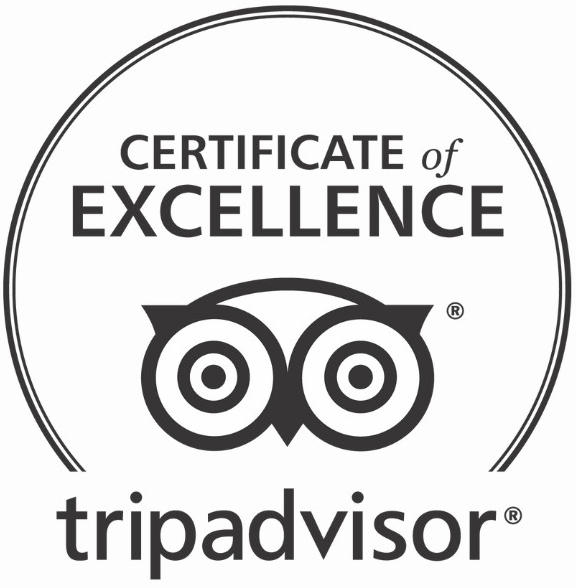 Cambodia is a reasonably safe destination and can be visited throughout the year. The capital, Phnom Penh, is rapidly developing, as are the other major cities and towns. Many of the comforts of home can be found here, from air-conditioning and wireless internet in many hotel rooms, restaurants and bars, to the availability of food and other products from around the world.
Cambodia is a reasonably safe destination and can be visited throughout the year. The capital, Phnom Penh, is rapidly developing, as are the other major cities and towns. Many of the comforts of home can be found here, from air-conditioning and wireless internet in many hotel rooms, restaurants and bars, to the availability of food and other products from around the world.
Other aspects of travel in the country may be less comfortable, such as uneven ground and heat in markets, and relentless heat if visiting tourist sites during the middle of the day. The usual precautions apply to maintaining personal safety, like locking valuables in your hotel safety deposit box before venturing out. If you have already booked your trip to Cambodia click here to download our pre-departure guide.
CLIMATE & TIMES TO VISIT
There are two distinctive seasons in Cambodia: wet and dry. In the wet, or monsoon, season (May to October) the temple moats around the Temples of Angkor are full, skies can be dramatic, and the rice-fields glimmer when the sun comes out after a brief downpour. It usually only rains for a short time in the afternoon, and does not affect touring. In the dry season (November to March), daytime temperatures are a steady 30-35 degrees and rain is less likely. Roads can get dusty, but you will find it easier to walk through the leafy areas that surround the temples.
WHAT TO EXPECT
 Service standards in Cambodia are rapidly improving, and in top restaurants and hotels you can expect service levels to be of a similar standard as Western countries. However in many cases, hotel and restaurant staff are still learning about the hospitality and tourism trade and misunderstandings can occur. As is always the case when travelling in Asia, patience and flexibility will serve you well in Cambodia.
Service standards in Cambodia are rapidly improving, and in top restaurants and hotels you can expect service levels to be of a similar standard as Western countries. However in many cases, hotel and restaurant staff are still learning about the hospitality and tourism trade and misunderstandings can occur. As is always the case when travelling in Asia, patience and flexibility will serve you well in Cambodia.
Phnom Penh and Siem Reap are rapidly developing, and here you will have access to a range of international cuisines, wireless internet, and other modern conveniences. However when travelling in more remote areas, you can expect clean yet basic accommodation, bumpy roads, and less choice when it comes to eating. Cambodia is hot all year round; if you feel the heat it is advisable to avoid touring and covered markets in the middle of the day.
EVENTS
 In Cambodia, holidays are celebrated for a range of reasons: to celebrate royal birthdays, to mark significant anniversaries, to signal the change of season, and to mark milestones in Buddha’s life. The Khmers love a public holiday! Banks, public offices and some tourist sites will be closed on the holidays listed below. As major holidays such as Bonn Um Tuk (Water Festival) are set according to the lunar calendar, dates change every year.
In Cambodia, holidays are celebrated for a range of reasons: to celebrate royal birthdays, to mark significant anniversaries, to signal the change of season, and to mark milestones in Buddha’s life. The Khmers love a public holiday! Banks, public offices and some tourist sites will be closed on the holidays listed below. As major holidays such as Bonn Um Tuk (Water Festival) are set according to the lunar calendar, dates change every year.
- 1 January is International New Year’s Day.
- 7 January is Victory Day, a public holiday celebrating the end of the Khmer Rouge’s reign in 1979.
- February – on the full moon day of the third lunar month is Meak Bochea Day, a public holiday commemorating the spontaneous gathering of monks to listen to Buddha’s preaching.
- 14-16 April is Khmer New Year, a national public holiday.
- April/May is Visakha Buchea Day.
- May – on the 4th to 6th days of the waning moon of the sixth lunar month is the Royal Ploughing ceremony.
- 13-15 May is a public holiday to celebrate the King’s birthday.
- 1 June is International and National Children’s Day.
- 18 June is a public holiday to celebrate the Queen mother’s birthday.
- 24 September is Constitution Day.
- September/October – on the 15th day of the tenth month in the Khmer calendar is the three day Pchum Ben holiday.
- 29 October King Coronation Day.
- 31 October is King Sihanouk’s official birthday.
- 9 November is a public holiday.
- November – on the full moon of the Buddhist month of Kadeuk is the Water Festival, spanning several days commemorating the change in direction of the Mekong and Tonle Sap rivers.
THINGS TO REMEMBER

DOs
- Ask for permission before taking photographs of any Cambodian people or monks.
- It is customary to remove your shoes when entering a place of worship such as a pagoda or temple. Additionally, visitors should dress appropriately when inside a religious site (upper arms and legs should be covered, hats removed).
- It is respectful to remove your shoes when entering someone’s home.
- Though not always expected, a respectful way of greeting another individual is to bow the head slightly with hands pressed together at the chest (known as “Sampeah”).
- If invited to dine in a Cambodian family’s home, it is polite to bring a small gift for the host such as fruit, dessert, or flowers.
- If invited to attend a Cambodian wedding, it is customary to bring cash as a wedding gift.
- When using a toothpick at the table, use one hand to cover your mouth.
- Keep business cards ready, and present them with both hands. Accept business cards with both hands.
DON’Ts
- Don’t use your feet to point at someone.
- Don’t touch a Cambodian person on the head.
- Don’t begin eating if you are a guest at a dinner and the host has yet to take a bite.
- Women should never touch male monks or hand something directly to them.
- Keep public displays of affection to a respectful minimum.
Commonsense Practices
- Do not litter; keep our community clean and safe
- Plastic bags can be hazardous; dispose them properly

